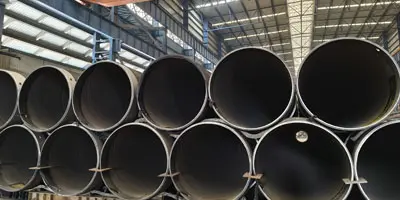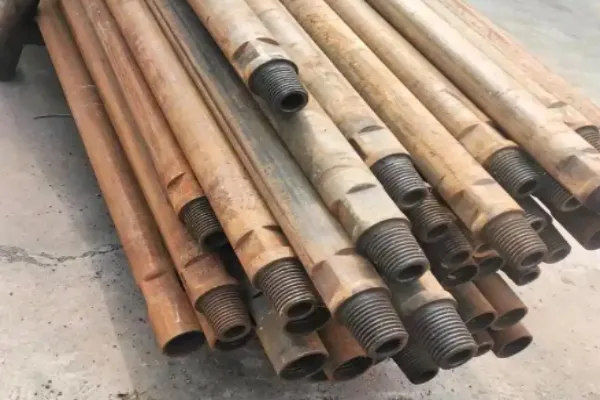In the oil and gas industry, choosing the right drill pipe specification is critical to ensuring the safety and efficiency of drilling operations. The American Petroleum Institute (API) has established several standards for drill pipe manufacturing, including API 5D and API 5DP. These two specifications are closely related, but apply to different operational needs. Understanding the difference between API 5D and API 5DP is important for selecting the right pipe based on the conditions of the drilling environment.
This article will explore the main differences between API 5D and API 5DP, focusing on the differences in their testing, alignment, welding, coating, and marking requirements. After reading this article, you will be able to clearly distinguish between the two standards and understand which specification is more suitable for a specific drilling project.
Definition of API 5D
API 5D is a standard set by the American Petroleum Institute that defines the specifications for drilling pipes used in the oil and gas industry. These pipes are typically made from high-strength steel grades such as E-75, X-95, G-105, and S-135, which are specifically designed to withstand the pressures and stresses encountered during drilling operations. The manufacturing process for API 5D pipes typically involves hot-rolling and heat treatment to improve the material's durability. These pipes are commonly used in conventional drilling operations, where standard strength and durability are sufficient to handle normal drilling conditions. The pipes are subjected to various tests to ensure they meet quality standards, including tensile, hardness, and impact tests, which help ensure their reliability in the field.
API 5DP is an upgraded version of API 5D, specifically targeting the development needs of modern drilling technology. API 5DP drill pipe generally adopts more stringent manufacturing and inspection standards to ensure better performance under high-intensity, high-torque drilling conditions. The main difference between API 5D and API 5DP is the manufacturing process, which includes advanced heat treatment and hardening technology to improve the toughness and stress resistance of steel. As a result, API 5DP pipes can withstand higher levels of mechanical stress, making them suitable for deeper and more challenging drilling operations. These pipes may also have premium connections and API threaded connections to enhance their sealing capabilities, ensuring higher safety during operations.
Differences Between API 5D and API 5DP
The primary differences between API 5D and API 5DP are centered around their material composition, manufacturing techniques, and overall mechanical properties. API 5D pipes are designed for standard drilling operations, offering good resistance to pressure and wear but not optimized for extreme conditions. API 5DP, however, is manufactured with advanced techniques that provide superior strength and durability, allowing these pipes to perform under more challenging conditions. The advanced manufacturing processes of API 5DP contribute to a higher cost, but the added durability and reliability can be crucial for operations in demanding environments. The chart below highlights the main distinctions between the two standards:
1.End diameter test
API 5DP has stricter requirements and needs to be tested over the entire length, especially the thickened area, to ensure the diameter accuracy, while API 5D only uses standard gauges for testing.
2.Tool joint alignment tolerance
API 5DP requires more precise alignment between the tool joint and the pipe body, and strictly controls the maximum deviation to reduce wear and failure risks, while API 5D has looser requirements.
3.Welding strength and processing requirements
API 5DP requires that the weld strength is higher than the pipe body, and the weld needs to be machined or polished to ensure a smooth surface, while API 5D does not make this requirement.
4.Internal and external coating standards
API 5DP pays more attention to anti-corrosion coatings, especially inner wall protection, while API 5D mainly targets external anti-rust coatings.
5.Drill pipe marking requirements
API 5DP requires more detailed markings, including manufacturer information, steel grade, weight, etc., and specifies specific marking locations, while API 5D only requires basic markings.
6.Other Enhanced Requirements
API 5DP is suitable for more demanding drilling environments, including stricter thread protection, alignment tolerances and special coating requirements, while API 5D is suitable for conventional drilling operations.
|
Feature
|
API 5D
|
API 5DP
|
|
Material
|
High-strength steel (E-75, X-95)
|
High-resistance steel with advanced treatment
|
|
Manufacturing Process
|
Hot-rolling and heat treatment
|
Advanced heat treatment and hardening
|
|
Mechanical Strength
|
Moderate resistance
|
Higher tensile strength and fatigue resistance
|
|
Applications
|
Conventional drilling operations
|
Deep well, high-pressure, and extreme condition drilling
|
|
Cost
|
Lower cost
|
Higher cost due to advanced technology
|
Summary
While both
API 5D and API 5DP provide robust standards for
drill pipe manufacturing, the choice of which standard to use depends on the specific needs of the drilling operation. API 5D is suitable for standard drilling conditions, while API 5DP is more suitable for more demanding operating environments, such as deep well drilling or offshore drilling projects, where more extreme conditions may be encountered.
The enhanced specifications of API 5DP—including tighter alignment tolerances, stronger welding requirements, more comprehensive coating requirements, and more detailed marking and identification provisions—make it the preferred choice for high-intensity drilling operations. For conventional operations, API 5D may be a more cost-effective option.
By understanding the differences between the two, operators can ensure that they select the most appropriate drill pipe specification, thereby improving the safety and efficiency of
drilling operations.






 English
English Español
Español بالعربية
بالعربية











 Phone :
Phone :  Whatsapp :
Whatsapp :  Email :
Email : 


